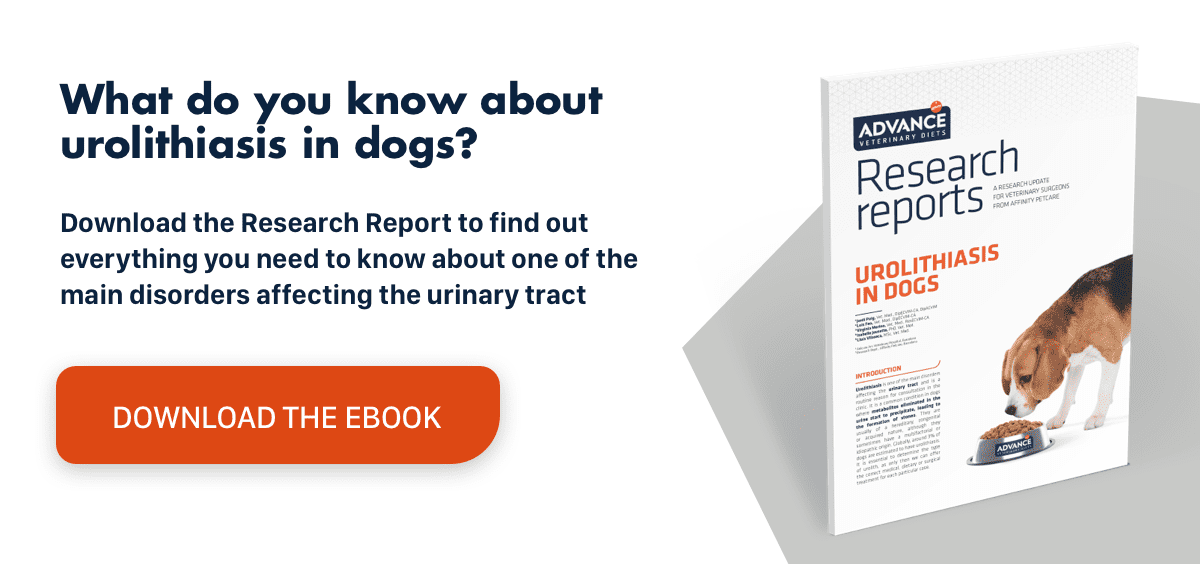X-rays in dogs: traumatic rupture of the ureter
Radiography in dogs is one of the most widely used diagnostic methods in veterinary medicine as it provides valuable information about the diagnosis and treatment of different diseases, in some cases achieving the same level of accuracy as ultrasound, according to research by Sharma et al.1
X-rays are often very useful in the diagnosis of bone disease, but they are also an excellent means of detecting infections, digestive problems, tumours and disorders that often go unnoticed, such as traumatic rupture of the ureter.
Radiological signs of traumatic rupture of the ureter
Traumatic rupture of the ureter is a very rare problem in dogs, and it is estimated that only 0.1% of dogs seen by vets suffer from this problem. It involves the rupture or tear of a segment of one or both ureters, the ducts that transport urine from the kidneys to the bladder. In most cases, the rupture is secondary to a traumatic event, normally affecting the proximal segment of the ureters, and often goes unnoticed, at least until the first clinical signs appear.
The most common signs are generally abdominal distension and discomfort, as shown in the study by Chick Weisse, Lillian R. Aronson and Ken Drobatz2 in which clinical indicators were analysed in 10 animals, 8 of which were dogs, with a unilateral rupture of the ureter secondary to trauma. Physical examination revealed multiorgan damage, while radiological findings in dogs showed a loss of detail at an abdominal and retroperitoneal level.
It is interesting to note that only 2 animals had urinary tract signs, such as anuria, dysuria, haematuria or a combination thereof. However, a case study by Abelardo Morales et al.3 reported clinical pictures that included polyuria and polydipsia, in the absence of ascites, in the first few days after rupture.
Ultrasound and X-ray findings in dogs with a ruptured ureter also tend to highlight a build up of retroperitoneal fluid, better known as uroabdomen, as well as an absence of “ureteral jet” in the trigone of the bladder, two complications that can cause severe short-term consequences if not treated in time.
Traumatic rupture of the ureter in dogs: treatment and prognosis
The treatment of choice for traumatic rupture of the ureter is surgery. Exploratory laparotomy is often used to locate the rupture and identify the severity of the tear. When the damage is extensive, a nephroureterectomy is often performed to remove the affected ureter. However, for a small tear, ureteral anastomosis is usually carried out to remove the damaged part of the duct before suturing both ends.
Generally, animals undergoing a nephroureterectomy or ureteral anastomosis tend to have a favourable prognosis according to an analysis by Hamilton MH, Sissener TR and Baines SJ.4 Two cases of bilateral ureteric rupture in dogs were followed up in the study. One of the dogs died, but the other underwent contralateral nephroureterectomy, overcame the problem and progressed satisfactorily until regaining full vitality 16 months after surgery.
In fact, patients often overcome surgery without any major problems and recover satisfactory urinary function, although in most cases some changes in their lifestyle must be implemented to avoid future complications. The general recommendation is to increase fluid intake and invest in a low magnesium diet, such as the Advance Veterinary Diets Urinary range for dogs, which includes a Urinary for cats version, that helps acidify urine to prevent the formation of struvite stones, one of the most common causes of ureteric rupture.
